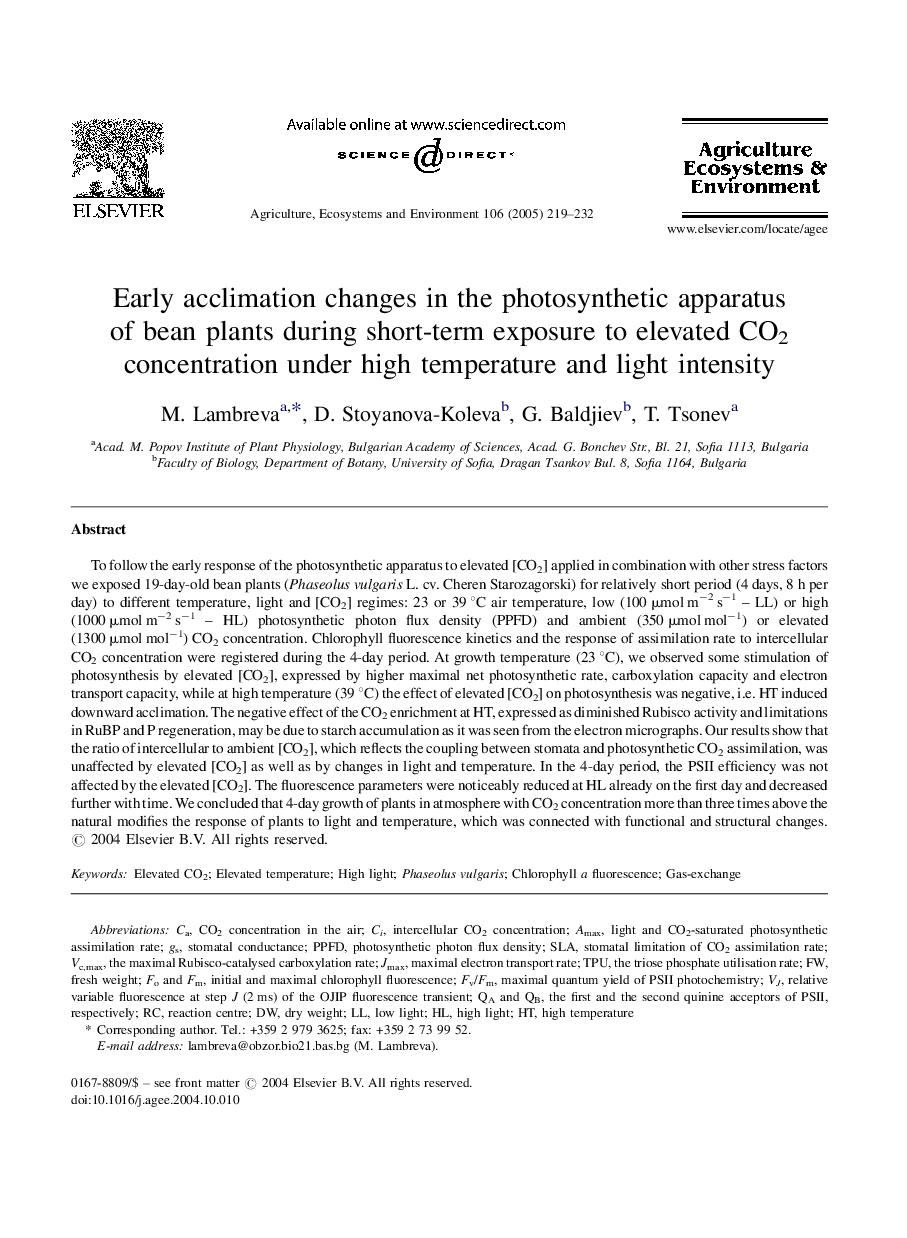| Article ID | Journal | Published Year | Pages | File Type |
|---|---|---|---|---|
| 8971038 | Agriculture, Ecosystems & Environment | 2005 | 14 Pages |
Abstract
To follow the early response of the photosynthetic apparatus to elevated [CO2] applied in combination with other stress factors we exposed 19-day-old bean plants (Phaseolus vulgaris L. cv. Cheren Starozagorski) for relatively short period (4 days, 8 h per day) to different temperature, light and [CO2] regimes: 23 or 39 °C air temperature, low (100 μmol mâ2 sâ1 - LL) or high (1000 μmol mâ2 sâ1 - HL) photosynthetic photon flux density (PPFD) and ambient (350 μmol molâ1) or elevated (1300 μmol molâ1) CO2 concentration. Chlorophyll fluorescence kinetics and the response of assimilation rate to intercellular CO2 concentration were registered during the 4-day period. At growth temperature (23 °C), we observed some stimulation of photosynthesis by elevated [CO2], expressed by higher maximal net photosynthetic rate, carboxylation capacity and electron transport capacity, while at high temperature (39 °C) the effect of elevated [CO2] on photosynthesis was negative, i.e. HT induced downward acclimation. The negative effect of the CO2 enrichment at HT, expressed as diminished Rubisco activity and limitations in RuBP and P regeneration, may be due to starch accumulation as it was seen from the electron micrographs. Our results show that the ratio of intercellular to ambient [CO2], which reflects the coupling between stomata and photosynthetic CO2 assimilation, was unaffected by elevated [CO2] as well as by changes in light and temperature. In the 4-day period, the PSII efficiency was not affected by the elevated [CO2]. The fluorescence parameters were noticeably reduced at HL already on the first day and decreased further with time. We concluded that 4-day growth of plants in atmosphere with CO2 concentration more than three times above the natural modifies the response of plants to light and temperature, which was connected with functional and structural changes.
Keywords
Related Topics
Life Sciences
Agricultural and Biological Sciences
Agronomy and Crop Science
Authors
M. Lambreva, D. Stoyanova-Koleva, G. Baldjiev, T. Tsonev,
